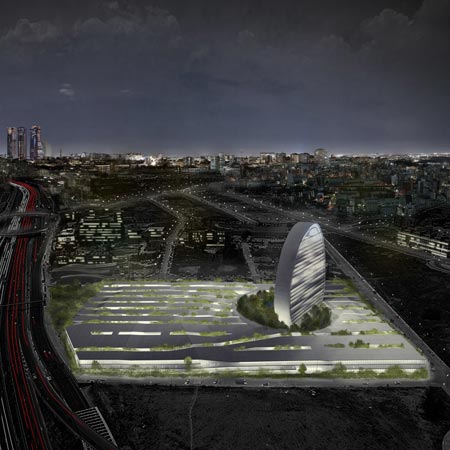
Architects Herzog & de Meuron have designed a new headquarters for Spanish banking group BBVA.
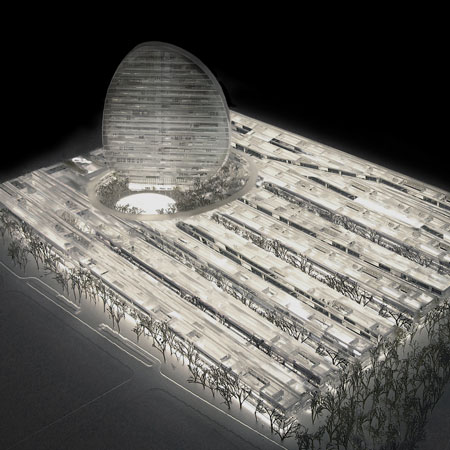
The building, due for completion in 2013, will be located on the outskirts of Madrid.
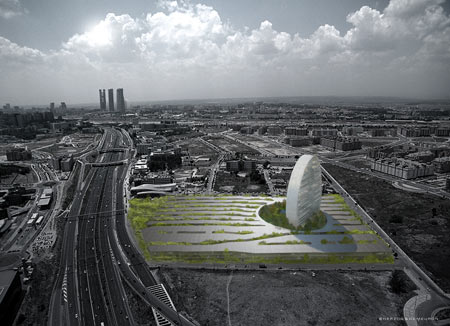
Here is an architectural statement from the architects:
–
New Headquarters for BBVA
Madrid, Spain
2007 –, planned completion 2013
Herzog & de Meuron
Architectural Statement

The site BBVA has procured for its new headquarters is located on the periphery of Madrid. It is surrounded by streets of newly erected offices, commercial buildings, and residential developments. It is a “site without qualities”, a desert-like place. We propose the creation of an artificial garden, an oasis, evolving from inside out—a place that establishes a balance between the natural environment and the buildings, and functions like a small city.
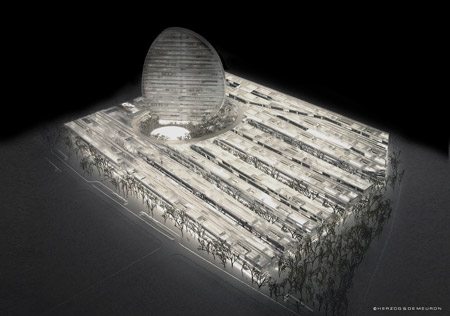
A linear structure composed of three-story buildings, alleyways and irrigated gardens is laid over the entire site like a carpet that follows the topography. Analogous to an Arabian garden, a cool, moist, fresh microclimate is created. Each workspace has a “green view”. The layout, with its horizontal branches, is more appropriate to today’s working world than open-plan offices, in which an employee feels like a number.
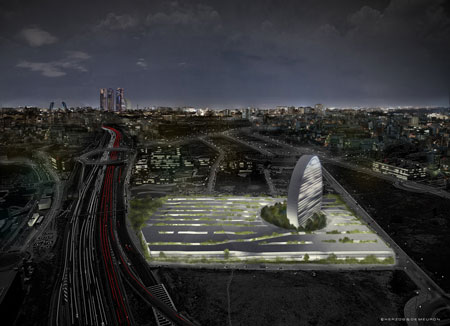
The complex encourages communication: people walk instead of taking elevators; they meet and talk to one another. A large degree of transparency generates a sense of community, while the relatively small units permit employees to identify with their particular group. Four existing buildings are integrated in the overall low-rise complex. Linear courtyards cut into the building mass link their structure with the new buildings.

In order to make the BBVA stand out in the skyline of the capital, the carpet is cut out in an approximate circle and tilted upwards: the result is a plaza and a slender, disk-shaped tower.
Plaza and Tower anchor the complex and provide orientation. The main entrance and various communal facilities form an interconnected ring around the plaza. The Tower, containing offices with views across the city and the Sierra of Madrid, contributes to the diversity of the workspaces.
The Plaza is planted with trees that provide generous shade, a large water basin humidifies the air and serves as a reservoir. Between the buildings, the gardens and alleyways echo the linear principle. Different trees and vegetation of varying densities distinguish the areas, so that they each retain their individual character within the overall context of the Carpet.
The Natural Resources
The design is adapted to the climatic conditions and makes efficient use of energy resources by providing ample natural daylight, while the gardens and alleyways are fully shaded in the summer months. Overhanging floorplates and a brise-soleil structure keep direct sunlight away from the workspaces. This minimizes the need for artificial lighting and air conditioning, which account for the greatest energy consumption in office buildings.
Ventilation is only needed to ensure the circulation of fresh air in the office spaces—windows can be opened to provide cross ventilation. Retractable elements in the roof help to control the temperature of the gardens.
The water that regulates the temperature of the floor slabs is geothermally cooled or warmed. Photovoltaic cells on the roofs as well as rain and grey water processing complete the overall sustainability concept.




0 commentaires:
Enregistrer un commentaire